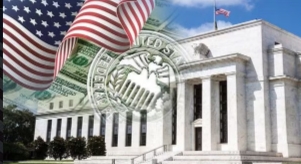Introduction
Whether you’re a cryptocurrency rookie or a veteran, your first step in buying Bitcoin or Dogecoin is to buy USDT, so what is USDT?
What is USDT?
USDT (Tether) is a digital currency issued by Tether that is pegged 1:1 to the United States Dollar (USD). Each 1 USDT is equal to 1 USD and is guaranteed by Tether’s reserves. In other words, for every USDT issued, Tether reserves one dollar, thus ensuring the stability of USDT.
Founded in 2014, Tether is a blockchain-based platform designed to facilitate the digital use of fiat currencies. Tether is committed to disrupting the traditional financial system through a more modern approach to money.

Transparency of USDT
Although USDT has a market capitalization of over $100 billion, its transparency has been controversial. Tether has promised regular audits but has yet to provide a full independent audit report in the traditional sense. Instead, they have issued “assurance reports” or “reports of assurance” provided by accounting firms, which show their reserves.
In February 2021, Tether settled with the New York Attorney General’s Office (NYAG) and agreed to provide quarterly reserve reports. Since then, Tether has regularly released proof-of-reserve reports showing the composition of its reserves, but the credibility of these reports remains controversial.
Blockchains Supported by USDT
USDT is issued on multiple blockchains, first on Bitcoin’s Omni layer. Below is a comparison of USDT on the major blockchains:
| Type | Blockchain | Protocol | Network Congestion | Transfer Speed | Fees | Security | Recommendations for Use |
|---|---|---|---|---|---|---|---|
| USDT-Omni | Bitcoin Blockchain | Omni Layer Protocol | High | Slower | High | High | For high-security scenarios, but tolerate slower speeds and higher fees |
| USDT-ERC20 | Ethereum Blockchain | ERC20 Standard | Medium | Faster | Depends on Gas price | High | For scenarios requiring compatibility with Ethereum applications |
| USDT-TRC20 | Tron Blockchain | TRC20 Standard | Low | Very Fast | Very Low | Lower than the previous two | For scenarios where fast, low-fee transactions are needed |
USDC
Another stablecoin similar to USDT is USDC. USDC is primarily issued on ERC20 but can also be issued on other blockchains such as AVAX and Solana, adding flexibility and compatibility to its use.
Transparency of USDC
USDC is issued by Circle, which is much more transparent than USDT. Circle regularly commissions reputable accounting firms to audit USDC reserves, and the audit reports are usually published monthly, detailing the reserves and ensuring that every USDC issued is backed by $1.
Crisis
Cryptocurrencies themselves are high-risk, high-volatility products, including stablecoins that can be unstable. In March 2023, following the failure of Silicon Valley Bank, Circle was unable to access the $3.3 billion in USDC reserves held by the bank, leading to a period of decoupling of the USDC to a low of $0.87. USDC recovered after Silicon Valley Bank assured the market that customers would be fully compensated.

Similarities and Differences Between USDT and USDC
USDT and USDC share the same marketplace, and which one to choose depends on the user’s needs and preferences. USDT is more widely supported when trading on exchanges; however, when using the DeFi app, USDC usually brings better support or higher returns.
| Comparison Dimensions | USDC and USDT Similarities | USDC | USDT |
|---|---|---|---|
| Markets | Have a common market, use depends on personal preference and market support | ||
| Pegged to the USD | Both are pegged to the value of the US dollar and use similar minting and destruction mechanisms | ||
| Recovery from De-pegging Events | Both tokens quickly regained peg and market confidence in reserve value | ||
| High Liquidity and Volume | High liquidity and volume, widely used for trading and DeFi | USDC dominates many DeFi lending programs | Eight of the top ten Bitcoin exchanges pair BTC with USDT |
| Reserve Backed | Linked to USDC reserves at a 1:1 ratio using a similar basket of assets | Cash: 12.88%, Circle Reserve Fund: 87.12% | Cash & Cash Equivalents: 84.58%, Mortgages: 4.95%, Other Investments: 3.89%, Precious Metals: 3.62%, Bitcoin: 3.89%, Corporate Bonds: 0.05% |
| Issuing Company | Launched by Circle/Coinbase, Reserve Fund is held by BlackRock | Issued by Tether Limited, which holds a wide range of assets, including precious metals and bitcoin | |
| Reserve Transparency | Provides monthly reports and is highly transparent | Less transparent, but improving | |
| Regulatory Compliance | Holds money transfer licenses in most U.S. states, reserve assets are held in regulated banks or funds held by BlackRock | Headquartered in the British Virgin Islands, faces different regulatory challenges, has had conflicts with the CFTC | |
| Blockchain Network | Both support multiple blockchain and token standards | Support for Ether and other EVM-compatible chains, removing support for Tron | Support for multiple blockchain and token standards, including Tron |
FAQs
Which is more secure, USDT or USDC?
USDC is considered to be relatively more secure due to its more detailed transparency and audit reports.
Why is a stablecoin needed?
Stablecoins offer the convenience of digital currency while avoiding the high volatility of cryptocurrencies and are suitable for trading and storing value.
What are the main uses of USDT and USDC?
They are mainly used for cryptocurrency trading, cross-border payments, and stored value.
Conclusion
Both USDT and USDC are important stablecoins with their own advantages and disadvantages. USDT is more widely supported on exchanges, while USDC has an advantage in transparency and compliance. Users can choose the right stablecoin according to their needs and preferences.






